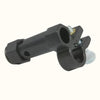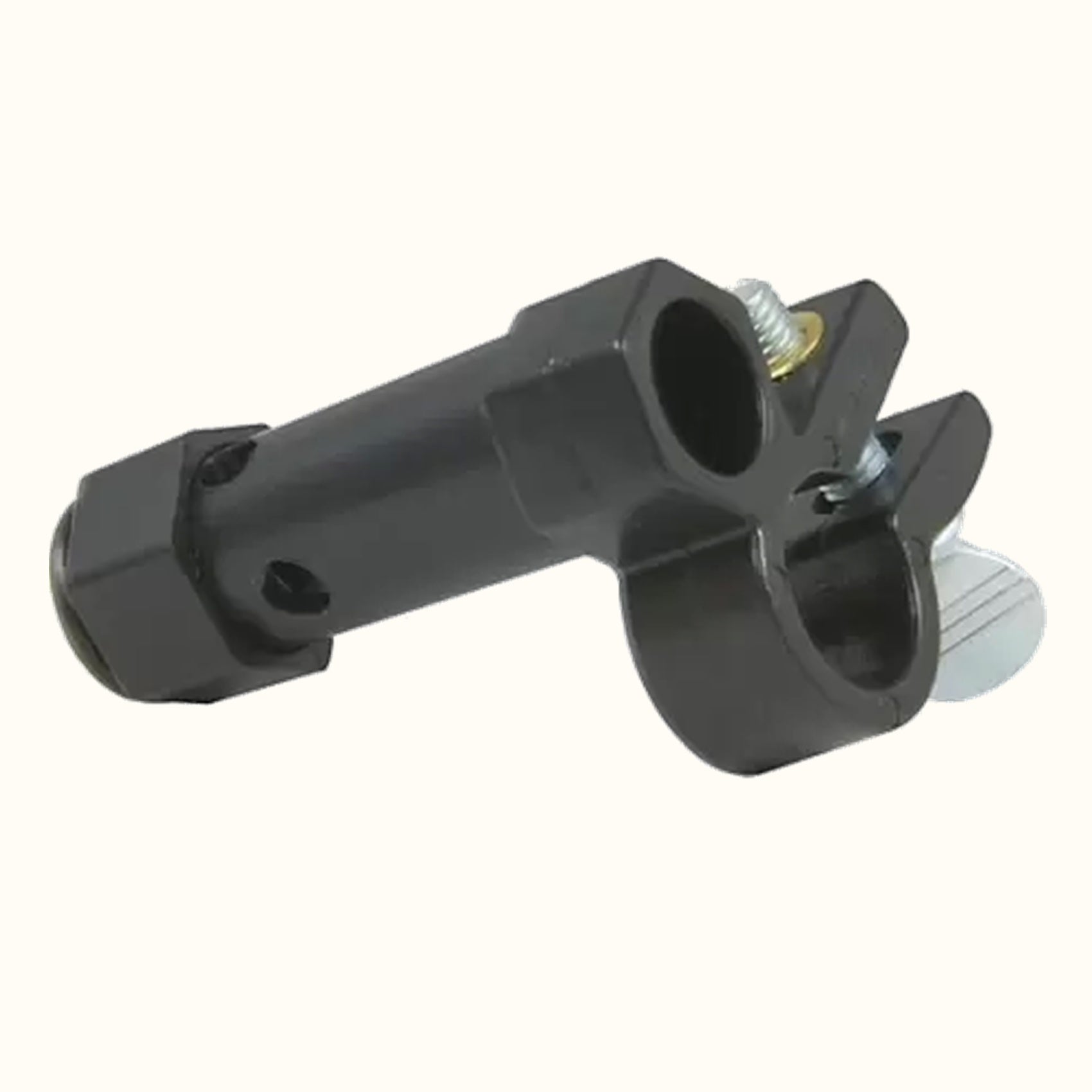The BERP Mouthpiece Trainer
Description
The BERP Mouthpiece Trainer helps you develop proper breath support by blowing into resistance, letting you buzz your mouthpiece while you hold your instrument in the regular playing position.
The clamp. The BERP Mouthpiece Trainer clamps firmly onto the open end of the instrument’s receiver,
with the mouthpiece removed. It’s designed to tighten around a round, hex, or convex-shaped opening.
If a receiver has an oversized ring at the opening, it may be necessary to push the clamp
past that before tightening down. For some receivers, you may also need to add black
electrical tape to the inside of the clamp to help prevent slippage and ensure a secure fit.
Most people prefer to line The Berp up parallel to the receiver at the “three o’clock” position. You may want to experiment with other positions to determine what’s best for you. Once The Berp is firmly attached, you can easily alternate between buzzing and playing your instrument by switching the mouthpiece.
The resistence dial. The dial for the trumpet, horn, and cornet Berp should be positioned below the holes and pushed up to partially cover them to create the desired resistance. The dial on The Berp for trombones, euphoniums, and tubas should be positioned above the holes and lowered to create the desired resistance. Beginners usually have a better chance of getting a good buzz with slightly more resistance. Once a good buzz is achieved, resistance on The Berp should be dialed similarly to that of the instrument.
Time to Berp
- Clamp The Berp onto the receiver. Play the starting pitch on your instrument, then place the mouthpiece in The Berp and buzz the exercise like a siren or glissando.
- Buzz the exercise again, but this time center each pitch and press your instrument’s valves down or move the slide to the notes that you are playing. When you play The Berp, practice making the beginning and ending pitch sound (resonate) the same. Correct sound production will result when the air leads the way, whether ascending or descending.
- Finally, play the exercise on your instrument with the same energy you used to make a consistent buzz. The embouchure should feel more relaxed than when buzzing in order to get a free, resonating sound. Always alternate between the berp and playing your instrument, to gain ear training benefits and strengthen your embouchure.
Shipping and returns
Pricing, Taxes, & Products:
All prices are in US dollars and are accurate to the best of our knowledge. Prices do not include taxes or other duties that may be assessed. If the order is shipped to any Illinois address, sales tax will be assessed to the total purchase price. We reserve the right to change prices at any time and are not responsible for typographical errors. We cannot match prices in-store to those advertised online and may not have all in-store products available online. Equity accrued through rental is only available for products in our stores and not online. Due to the natural materials many of our products are made of, we try to choose images for our website that accurately reflect the product. Still, some variations may occur (i.e., varnish shading and color, wood color, grain, etc.). Please contact us before ordering to obtain pictures of the item you will receive.
Shipping Information:
• In-stock items are generally dispatched within two days after receipt of payment. Tracking information will be emailed to the email address associated with the order as soon as the item ships from our warehouse.
• back-ordered item(s) will ship as soon as they become available.
Due to the delicate nature of Cellos, we do not ship at this time. All Cello purchases are in-store pickup only.
Standard Shipping
All orders over 30.00 dollars shipped to the contiguous 48 states will ship free of charge, using the best and fastest option available. (Overweight items are excluded. Any item that will get an additional handling fee will be marked as an “Oversized Item”). Standard shipping typically takes 2-10 business days to arrive, depending on location.Boxes are amply sized, and your items are well-protected.
Store Pickup
Pickup at our Algonquin store is free for all orders.
Refunds and Returns:
Products can be returned within 30 days of receipt of the shipment. After 30 days, no products can be returned. Strings, music, and other consumables (oils, reeds, rosin, etc. ) cannot be returned unless an error was made in the shipment. Please call (847) 458-7386 to obtain a return authorization number before returning. If an item is returned without an RMA number, your refund will be delayed, and a 15% restocking fee will be applied. All products must be returned in brand-new condition with all accessories and packaging. Please use a reputable shipping service with a way to track the package. Cassandra Strings, Inc. is not responsible for returns lost in transit. Because we cannot guarantee the fit of an instrument or bow in a case, we will not be liable for return shipping if an item does not fit your instrument or bow correctly.
You may request a pre-paid return shipping label for convenience and cost savings. Please note if you request a pre-paid return label from us, and if the merchandise you're returning is NOT defective or damaged, your pre-paid return label cost will be deducted from your refund. Attach the label to your package. Ensure the RA# you were issued is on the outside of the box. Unless there is a manufacturer defect or you were sent something in error, the shipping cost will be deducted from your refund. Cassandra Strings, Inc. does not pay for return shipping unless a mistake was made in the shipment.
Please send the product to:
Attn: Returns Manager
Cassandra Strings, Inc.
215 S. Main St.
Algonquin, IL 60102
Please note: Shipping charges are non-refundable. Defective products will be replaced, and return shipping will be reimbursed.
Hours:
Monday-Thursday
10 am-5 pm
Saturday
10 am-2 pm
847-458-7386
If you have any questions, please get in touch with customer service.


